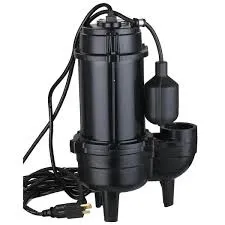English
- Afrikaans
- Albanian
- Amharic
- Arabic
- Armenian
- Azerbaijani
- Basque
- Belarusian
- Bengali
- Bosnian
- Bulgarian
- Catalan
- Cebuano
- Corsican
- Croatian
- Czech
- Danish
- Dutch
- English
- Esperanto
- Estonian
- Finnish
- French
- Frisian
- Galician
- Georgian
- German
- Greek
- Gujarati
- Haitian Creole
- hausa
- hawaiian
- Hebrew
- Hindi
- Miao
- Hungarian
- Icelandic
- igbo
- Indonesian
- irish
- Italian
- Japanese
- Javanese
- Kannada
- kazakh
- Khmer
- Rwandese
- Korean
- Kurdish
- Kyrgyz
- Lao
- Latin
- Latvian
- Lithuanian
- Luxembourgish
- Macedonian
- Malgashi
- Malay
- Malayalam
- Maltese
- Maori
- Marathi
- Mongolian
- Myanmar
- Nepali
- Norwegian
- Norwegian
- Occitan
- Pashto
- Persian
- Polish
- Portuguese
- Punjabi
- Romanian
- Russian
- Samoan
- Scottish Gaelic
- Serbian
- Sesotho
- Shona
- Sindhi
- Sinhala
- Slovak
- Slovenian
- Somali
- Spanish
- Sundanese
- Swahili
- Swedish
- Tagalog
- Tajik
- Tamil
- Tatar
- Telugu
- Thai
- Turkish
- Turkmen
- Ukrainian
- Urdu
- Uighur
- Uzbek
- Vietnamese
- Welsh
- Bantu
- Yiddish
- Yoruba
- Zulu
Telephone: +86 13120555503
Email: frank@cypump.com
Nov . 30, 2024 06:20 Back to list
Understanding the Functionality and Applications of Ejector Systems in Various Industries
Understanding Ejector Systems Principles and Applications
Ejector systems are fascinating devices that utilize the principle of jet propulsion to create a vacuum or suction effect in various applications. Their design and function rely on fluid dynamics and the relationship between pressure and velocity, allowing for effective transfer or movement of gases and liquids without the need for mechanical moving parts like pumps or compressors. This article will explore the principles behind ejector systems, their components, and their diverse applications in industry.
Fundamental Principles
At the heart of any ejector system is the Venturi effect, which describes how a fluid’s velocity increases as it passes through a constricted section of pipe, leading to a decrease in pressure. An ejector typically consists of three main parts the nozzle, the mixing chamber, and the diffuser.
1. Nozzle The process begins at the nozzle, where a high-pressure fluid (often called the motive fluid) is forced through a narrow opening. As it exits, the fluid accelerates to high velocity, creating a low-pressure area in the mixing chamber.
2. Mixing Chamber In the mixing chamber, the low-pressure zone created by the high-velocity motive fluid draws in the surrounding fluid (the suction fluid). This could be air, steam, or another gas that needs to be evacuated. The mixing of the two fluids occurs rapidly, and the kinetic energy from the motive fluid transfers to the suction fluid.
3. Diffuser After the fluids mix, they enter the diffuser section of the ejector where the cross-sectional area increases. Here, the velocity of the mixed fluid decreases, resulting in an increase in pressure. The fluid can then be discharged at a usable pressure.
Advantages of Ejector Systems
One of the greatest advantages of ejector systems is their simplicity and reliability. Unlike traditional pumping systems, ejectors have no moving parts, which significantly reduces maintenance needs and increases longevity. Additionally, ejectors can handle a mixture of gases and liquids, making them versatile for various applications. They can also operate in hazardous environments where electrical equipment might pose a risk.
Furthermore, ejectors can often operate using waste heat or steam, providing an energy-efficient solution for many industrial processes. Their ability to generate a vacuum or transport materials at low pressures offers a unique advantage in scenarios where maintaining a specific atmospheric condition is critical.
ejector system

Applications in Industry
Ejector systems have widespread applications across several industries
1. Chemical Processing In chemical manufacturing, ejectors are often used for vacuum distillation, where low-pressure environments are necessary to prevent thermal decomposition of heat-sensitive materials.
2. Pharmaceuticals The pharmaceutical industry utilizes ejector systems for transferring bulk powders and maintaining vacuum conditions during granulation, particularly in processes involving active pharmaceutical ingredients that are sensitive to moisture.
3. Environmental Engineering Ejectors find applications in remediation processes, such as soil vapor extraction, where volatile organic compounds (VOCs) need to be drawn from contaminated soils efficiently.
4. Food and Beverage Ejector systems are used in the food industry for vacuum packing, preserving food items by removing air and reducing the potential for spoilage.
5. Aerospace and Defense In aerospace, ejectors are part of systems used for propulsion and power generation, while in defense, they are employed in systems requiring the handling of gases safely and efficiently.
Conclusion
Ejector systems represent a critical technology that combines simplicity with functionality across a myriad of industrial applications. Their reliance on fundamental principles of fluid dynamics allows them to accomplish tasks that are essential for modern manufacturing and processing. As industries continue to seek more efficient and reliable methods to handle various fluids, ejectors will undoubtedly remain a key component in achieving those goals. Understanding their mechanisms allows engineers and operators to leverage these systems effectively, ensuring optimal performance and efficiency in various operational settings.
-
Horizontal Split Case Pump with GPT-4 Turbo | High Efficiency
NewsAug.01,2025
-
ISG Series Pipeline Pump - Chi Yuan Pumps | High Efficiency, Durable Design
NewsAug.01,2025
-
Advanced Flue Gas Desulfurization Pump with GPT-4 Turbo | Durable & Efficient
NewsJul.31,2025
-
ISG Series Vertical Pipeline Pump - Chi Yuan Pumps | Advanced Hydraulic Design&Durable Construction
NewsJul.31,2025
-
ISG Series Vertical Pipeline Pump - Chi Yuan Pumps | Energy Efficient & Low Noise
NewsJul.31,2025
-
pipeline pump - Chi Yuan Pumps Co., LTD.|High Efficiency&Low Noise
NewsJul.31,2025










